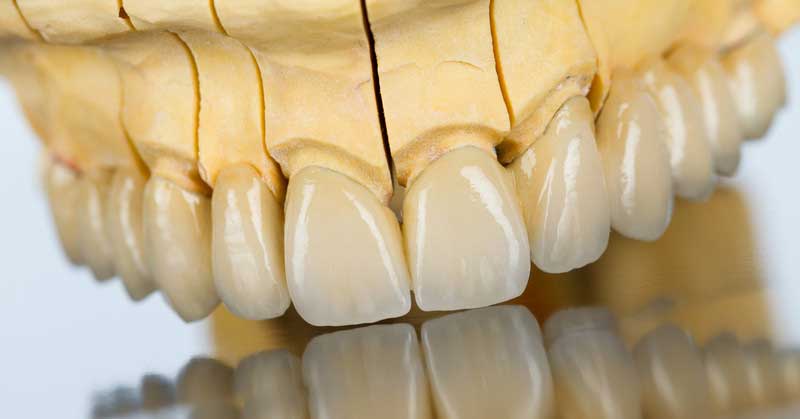Missing a tooth not only impacts the appearance of your smile, but it also negatively affects how you speak and chew food. Eventually, if you choose to simply live without a few teeth, your other teeth will shift in place. That can throw your bite off, which can lead to a variety of other issues – none of which are positive. Fortunately, there are several methods that your dentist can use to replace your missing teeth. Two of the most popular are partial dentures and dental bridges. Although these appliances may seem similar, there are some important differences that you should be aware of before deciding which choice is right for you.
WHAT YOU SHOULD KNOW ABOUT DENTAL BRIDGES
A dental bridge consists of one or more artificial teeth attached by a crown on either side. The two crowns fit over your existing teeth, allowing the artificial teeth to fill in the gap left behind by your missing teeth. A bridge is permanent and cannot be removed by the patient since the crowns on either side of the artificial teeth are cemented onto the patient’s natural teeth. If no natural teeth exist on both sides of the gap, your dentist may recommend a dental implant be inserted to stabilize the bridge. Dental bridges come in a variety of different materials – such as gold and metal alloys – but the most popular is porcelain, which can be made to very closely match the shade of the patient’s existing teeth. Because dental bridges are permanent, the patient doesn’t have to change his or her daily oral hygiene routine, and the patient’s diet is not restricted in any way.
WHAT YOU SHOULD KNOW ABOUT PARTIAL DENTURES
The most obvious difference between bridges and partial dentures is that partials can be removed by the patient. This appliance consists of artificial teeth (one or more) affixed to a small portion of artificial gum material (usually made of pink acrylic) and set into a wireframe with clasps that attach to the patient’s natural teeth on either side of the gap. As is the case with full sets of dentures, partials should be removed for cleaning while the patient sleeps. Certain foods might be an issue if the part does not fit properly or moves around inside the patient’s mouth.
DECIDING BETWEEN THE TWO
While both bridges and partial dentures are effective ways of replacing missing teeth, a partial is a more typical choice for patients who are missing several teeth in a row. A bridge, on the other hand, is often recommended to replace one or two teeth. There are other factors to consider as well. To determine which is right for you, talk to your dentist.
New
Patient Special
FREE Exam & X- Rays
Orthodontic
Special
Get $1000 OFF
EZ Braces Treatment



5 Comments
I uszed to be able to find good advice from our content.
Here is my web-site https://vavadacasino.populiser.com/
Thanks for sharing. I read many of your blog posts, cool, your blog is very good.
Thank you for your sharing. I am worried that I lack creative ideas. It is your article that makes me full of hope. Thank you. But, I have a question, can you help me? https://accounts.binance.com/en-IN/register?ref=UM6SMJM3
Thanks for sharing. I read many of your blog posts, cool, your blog is very good.
Thanks for sharing. I read many of your blog posts, cool, your blog is very good.